The combination of venetoclax and quercetin exerts a cytotoxic effect on acute myeloid leukemia
- PMID: 39488609
- PMCID: PMC11531559
- DOI: 10.1038/s41598-024-78221-9
The combination of venetoclax and quercetin exerts a cytotoxic effect on acute myeloid leukemia
Abstract
Venetoclax is a BH3 mimetic that was recently approved for the treatment of acute myeloid leukemia (AML) treatment. However, the effect of venetoclax on AML remains limited, and a novel strategy is required. Here, we demonstrate for the first time that the cytotoxic effect of venetoclax drastically increased when by combined with the naturally occurring flavonoid quercetin. Combined treatment with venetoclax and quercetin caused most of AML KG-1 cells to exhibit a condensed morphology. Cell cycle analysis revealed that the combination strongly induced cell death. Caspase inhibitor blocked this cell death, and the combination induced poly (ADP-ribose) polymerase (PARP) cleavage, indicating that apoptosis was the primary mechanism. These effects were also observed in another AML cell line Kasumi-1 but not in chronic myeloid leukemia (CML) K562 cells. Public data analysis demonstrated that B-cell/CLL lymphoma 2 (Bcl-2) expression is increased in AML cells compared to other malignant tumors, and the survival and the growth of AML cell line depends on Bcl-2. We found that quercetin increased Bcl-2-associated X protein (Bax) expression in KG-1. Our study provides a novel function for quercetin and presents a promising strategy for AML treatment using venetoclax.
© 2024. The Author(s).
Conflict of interest statement
The authors declare no competing interests.
Figures
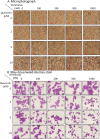
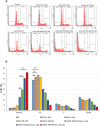
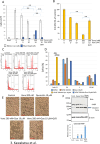
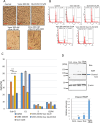
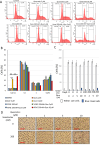

Similar articles
-
Venetoclax efficacy on acute myeloid leukemia is enhanced by the combination with butyrate.Sci Rep. 2024 Feb 29;14(1):4975. doi: 10.1038/s41598-024-55286-0. Sci Rep. 2024. PMID: 38424468 Free PMC article.
-
Superior anti-tumor activity of the MDM2 antagonist idasanutlin and the Bcl-2 inhibitor venetoclax in p53 wild-type acute myeloid leukemia models.J Hematol Oncol. 2016 Jun 28;9(1):50. doi: 10.1186/s13045-016-0280-3. J Hematol Oncol. 2016. PMID: 27353420 Free PMC article.
-
Abivertinib synergistically strengthens the anti-leukemia activity of venetoclax in acute myeloid leukemia in a BTK-dependent manner.Mol Oncol. 2020 Oct;14(10):2560-2573. doi: 10.1002/1878-0261.12742. Epub 2020 Jul 3. Mol Oncol. 2020. PMID: 32519423 Free PMC article.
-
Shutting Down Acute Myeloid Leukemia and Myelodysplastic Syndrome with BCL-2 Family Protein Inhibition.Curr Hematol Malig Rep. 2018 Aug;13(4):256-264. doi: 10.1007/s11899-018-0464-8. Curr Hematol Malig Rep. 2018. PMID: 29982865 Review.
-
Apoptosis targeted therapies in acute myeloid leukemia: an update.Expert Rev Hematol. 2020 Dec;13(12):1373-1386. doi: 10.1080/17474086.2020.1852923. Epub 2020 Dec 6. Expert Rev Hematol. 2020. PMID: 33205684 Review.
Cited by
-
Valproic Acid Enhances Venetoclax Efficacy in Targeting Acute Myeloid Leukemia.Diseases. 2025 Jan 8;13(1):10. doi: 10.3390/diseases13010010. Diseases. 2025. PMID: 39851474 Free PMC article.
-
Crosstalk Between Autophagy and Oxidative Stress in Hematological Malignancies: Mechanisms, Implications, and Therapeutic Potential.Antioxidants (Basel). 2025 Feb 25;14(3):264. doi: 10.3390/antiox14030264. Antioxidants (Basel). 2025. PMID: 40227235 Free PMC article. Review.
-
5,7-Dihydroxyflavone acts on eNOS to achieve hypotensive effects in spontaneously hypertensive rats.Sci Rep. 2025 Jan 2;15(1):594. doi: 10.1038/s41598-024-84259-6. Sci Rep. 2025. PMID: 39747252 Free PMC article.
References
MeSH terms
Substances
LinkOut - more resources
Full Text Sources
Medical
Research Materials

